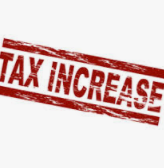
Martin v. Comm’r, T.C. Memo. 2021-35 | March 24, 2021 | Holmes, J. | Dkt. No. 10115-15
Short Summary: The IRS examined the taxpayers’ 2009 and 2010 joint income tax returns. After the exam concluded, the IRS issued a notice of deficiency determining the taxpayer had unreported income. In addition, the notice of deficiency denied certain losses from prior years, disallowed certain deductions related to taxpayer-husband’s business, and determined that penalties were appropriate.
Key Issue:
- Whether the taxpayers had additional, unreported income; were permitted to claim certain deductions; and were liable for the late-filing penalty and the accuracy-related penalty?
Primary Holdings:
- The taxpayers failed to rebut the presumption of correctness in the notice of deficiency; accordingly, the taxpayers had additional, unreported income and were entitled only to the deductions already permitted and conceded by the IRS in the notice of deficiency. In addition, the taxpayers are liable for the late-filing penalty because they failed to provide reasonable cause to excuse the penalty. However, the taxpayers are not liable for the accuracy-related penalty because the IRS failed to meet its burden of production in showing that the proper IRS manager provided written managerial approval of such penalty.
Key Points of Law:
- Generally, there is a presumption of correctness to the Commissioner’s notices of deficiency, and it is the taxpayers’ burden to prove otherwise. Welch v. Helvering, 290 U.S 111, 115 (1933). But, if a case is appealable to the Ninth Circuit, as here, the Commissioner must first show some evidence which would support an inference of the taxpayer’s involvement in the activity during the year at issue for the presumption to apply. Weimerskirch v. Comm’r, 596 F.2d 358, 361 (9th 1979), rev’g 67 T.C. 672 (1977).
- If a taxpayer does not keep adequate records of income, the IRS may reconstruct it, see 6001, 446(b), and may analyze the taxpayer’s bank deposits to do so. See Palmer v. IRS, 116 F.3d 1309, 1312 (9th Cir. 1997). A bank deposit analysis assumes that all money deposited in a taxpayer’s bank account during a given period is taxable income, and unexplained deposits are considered prima facie of income. See Tokarski v. Comm’r, 87 T.C. 74, 77 (1986). Taxpayers then have the burden to show that such deposits shouldn’t be taxed because they were inheritances, loan proceeds, transfers from another personal account, or other nontaxable transfers. Palmer, 116 F.3d at 1312.
- A cash-method taxpayer who receives a check must include the amount in income in the year in which the taxpayer receives it, even if not cashed until the following year. Kahler v. Comm’r, 18 T.C. 31, 34-35 (1952). But, for accrual basis taxpayers, income must be recognized when such income meets the all-events test. See 451(b); Treas. Reg. § 1.446-1(c)(1)(ii). Generally, all events fix a right to income on the earliest of the following: (1) the date payment is received; (2) the date payment is due; or (3) the date of performance. Harkins v. Comm’r, T.C. Memo. 2001-100.
- Section 172(a) allows a deduction for an NOL for any tax year in an amount equal to the sum of: (1) the NOL carryovers to such year; and (2) the NOL carrybacks to such year. The Code defines an NOL as the excess of deductions allowed by chapter 1 of the Code over the gross income, subject to certain modifications. See 172(c). Taxpayers may elect to forego a NOL carryback, but without a timely action they must carry NOLs back before they can carry them forward. Sec. 172(b)(2), (3). An election to waive a carryback must be made by the due date of the return for the tax year of the NOL for which the election is to be in effect. Sec. 172(b)(3).
- To substantiate an NOL, a taxpayer must meet his or her burden of establishing the existence as well as the amount that may be carried over to the years at issue. Powers v. Comm’r, T.C. Memo. 2013-134.
- Section 162(a) allows a taxpayer to deduct ordinary and necessary expenses, including legal expenses that are related to a taxpayer’s business. See Levenson & Klein, Inc. v. Comm’r, 67 T.C. 694, 720-21 (1977). Section 212 also allows individuals to deduct ordinary and necessary expenses paid or incurred for the production of income; or for the management, conservation, or maintenance of property held for the production of income. 212(1) and (2). To be deductible under either section, the expenses must not be personal and must also not be capital—capital expenditures have to be added to the basis of the capital asset and taken into account either through depreciation or in calculating any capital gain or loss when the asset is sold. Sec. 262(a), 263(a); Woodward v. Comm’r, 397 U.S. 572, 574-75 (1970).
- For legal expenses, the origin and character of the claim, rather than the taxpayer’s primary purpose in litigating the claim governs the proper characterization for federal tax purposes. Boagni v. Comm’r, 59 T.C. 708, 712 (1973). In determining the origin of any given claim, the Tax Court looks to all of the facts and circumstances, but the most important is how the litigation arose. See Gilmore, 372 U.S. at 49. For example, legal fees a taxpayer pays to defend his title to property are nondeductible capital expenditures. See Reed v. Comm’r, 55 T.C. 32, 40-41 (1970).
- Section 280A disallows deductions for the business use of a taxpayer’s home. But, there are exceptions. For example, a deduction may be claimed for certain business use of a designated portion of a taxpayer’s home so long as it is exclusively used on a regular basis: (1) as the taxpayer’s principal place of business; (2) as a place of business which is used by the taxpayer to meet with patients, clients, or customers, or (3) in connection with the taxpayer’s trade or business where the workspace is a separate structure not attached to the taxpayer’s home. 280A(c)(1). There is also an exception for any space that is used on a regular basis as a storage unit for the inventory held for use in the taxpayer’s business—but only if the taxpayer’s home is the sole fixed location of such trade or business. Id.
- The Code imposes an addition to tax when taxpayers do not file their return on time. 6651(a)(1). Taxpayers can avoid this penalty with proof that their failures were due to reasonable cause and not willful neglect. U.S. v. Boyle, 469 U.S. 241, 245 (1985).
- Section 6662(a) and (b)(2) imposes a 20% penalty when there is any substantial understatement of income tax. An understatement is substantial if it exceeds the greater of $5,000 or 10% of the tax required to be shown on the return. Id. Taxpayers are also liable for an accuracy-related penalty if they failed to make a reasonable attempt to comply with the provisions of the internal revenue laws. Reg. § 1.6662-3(b)(1).
- As part of the IRS’ burden of production with respect to accuracy-related penalties, the IRS must show that such penalties were personally approved in writing by the immediate supervisor of the individual making such determination. 6751(b); Graev v. Comm’r, 149 T.C. 485, 493 (2017).
Insight: Although the taxpayers in Martin lost on most issues, the taxpayers succeeded in having the accuracy-related penalty waived due to the IRS’ failure to comply with Section 6751(b). Taxpayers should continue to challenge penalties in any petition they file with the Tax Court.
Have a tax question? Contact Jason Freeman, Freeman Law, Texas.


















Recent Comments